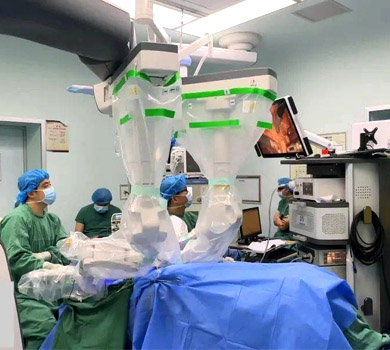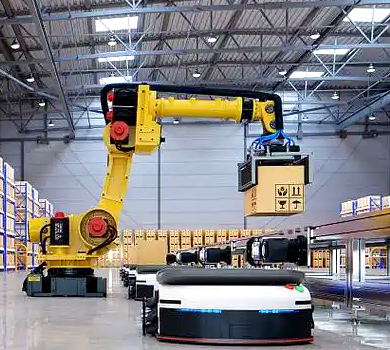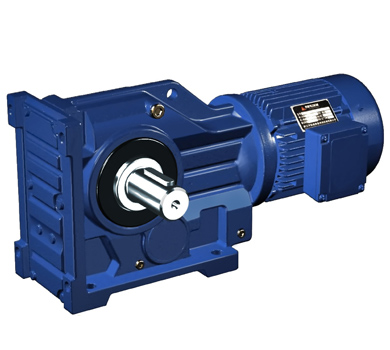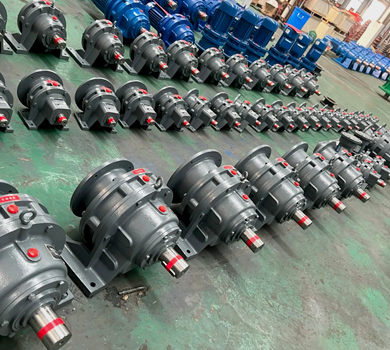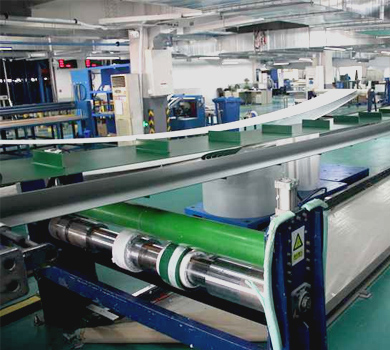As industrial automation continues to evolve, the demand for high-performance, reliable, and compact transmission systems in multi-axis collaborative robotic welding platforms has increased significantly. These systems require precise motion control, high torque density, and excellent long-term stability to ensure consistent welding quality and operational safety. In this case study, we analyze the key challenges in the industry and demonstrate how Waimica’s worm gearbox solutions deliver superior performance and value for this complex application.
1. Industry Challenges and Pain Points
The welding robot - multi-axis collaborative system base transmission is a core component of modern robotic welding cells, especially in high-volume manufacturing environments such as automotive, aerospace, and heavy machinery production. A typical system integrates multiple robotic axes (e.g., 6-DOF) with advanced motion control units, sensors, and end-effectors to achieve synchronized, high-precision welding tasks.
Current industry trends include:
- Miniaturization of components to enable flexible robot cell layouts.
- Increased integration of collaborative robots (Cobots) for human-robot interaction in shared spaces.
- Higher energy efficiency requirements to reduce operational costs and carbon footprints.
However, this rapid development is accompanied by several pain points:
- Low torque density in conventional transmission systems limits payload capacity and movement precision.
- High maintenance frequency due to wear and fatigue in gears and bearings under continuous heavy-duty operation.
- Compatibility issues with various robot arm brands and motion control platforms.
- Structural limitations that hinder compact and modular system design.
- Environmental adaptability is often compromised in high-temperature or corrosive industrial settings.
2. Critical Role and Technical Requirements of Gearboxes in Robotic Welding Systems
In a multi-axis collaborative welding robot base, the gearbox is essential for converting motor speed into precise, high-torque output. Key performance requirements include:
- High torque density to support heavier payloads and more robust movements.
- Low backlash and high transmission accuracy to ensure weld joint precision and repeatability.
- Fast response time for smooth and rapid motion transitions.
- Compatibility with motor types and mounting standards to facilitate integration into diverse robotic systems.
In addition to these, the following hidden requirements are critical for long-term performance:
- Environmental adaptability (e.g., IP65, heat resistance, dust and moisture protection).
- Long service life under continuous, high-load operation.
- Low maintenance frequency and easy serviceability to minimize downtime.
3. Waimica's Worm Gearbox Solution
Waimica’s worm gearboxes are specifically designed to meet the stringent demands of multi-axis collaborative welding systems. Below are the key features and performance highlights that directly address the industry’s challenges:
- Compact and modular design allows for easy integration into robotic bases without increasing the system’s footprint.
- High torque range (up to 2,000 Nm) ensures robust performance even under heavy welding loads.
- Low backlash (< 1 arcmin) provides exceptional positioning accuracy and repeatability.
- High efficiency (up to 80% at 250 Nm output) reduces energy consumption and heat generation.
- Wide range of input flange types and mounting options support compatibility with various motor and control systems.
- Specialized protection (IP67, -30°C to +100°C) for operation in harsh environments, including welding fumes and high heat.
| Parameter | Waimica | Leading Brand A | Leading Brand B |
|---|---|---|---|
| Maximum Output Torque | 2,000 Nm | 1,800 Nm | 1,750 Nm |
| Backlash | < 1 arcmin | < 2 arcmin | < 1.5 arcmin |
| Efficiency @ 250 Nm | 80% | 78% | 75% |
| Operating Temperature Range | -30°C to +100°C | -20°C to +85°C | -25°C to +90°C |
| IP Rating | IP67 | IP66 | IP66 |
| Mounting Flexibility | Supports multiple flange types and orientations | Limited flange options | Fixed orientation only |
4. Real-world Application and Customer Feedback
A leading automotive manufacturer in Europe was facing frequent breakdowns and alignment issues in their robotic welding system due to the low durability and poor thermal resistance of their previous gearboxes. Their robotic arms experienced position deviations during long production cycles, leading to inconsistent weld quality and increased maintenance costs.
Waimica’s technical team conducted a detailed on-site assessment and reviewed the system’s load profiles and motion requirements. Based on the findings, a custom worm gearbox was selected and integrated into the base of a 6-DOF collaborative welding robot. The new gearbox featured an IP67 rating and a thermal management system suitable for continuous high-temperature operations typical in robotic welding zones.
After implementation, the customer reported the following improvements:
| Performance Metric | Before Waimica | After Waimica |
|---|---|---|
| Position Repeatability | ±0.15 mm | ±0.08 mm |
| System Downtime | 4.2 hours/week | 1.1 hours/week |
| Service Interval | Every 3,000 hours | Every 6,500 hours |
| Energy Consumption | 18.5 kWh/shift | 15.3 kWh/shift |
According to the customer’s feedback, the Waimica gearbox has significantly improved system reliability, reduced maintenance costs by 40%, and increased overall equipment effectiveness (OEE) by 18% in just 6 months of operation.
5. Conclusion and Waimica Brand Value
Waimica has demonstrated strong technical capabilities and deep industry insight in delivering worm gearbox solutions for multi-axis collaborative welding systems. Our products not only match but in some cases surpass those of leading international competitors, while offering superior cost efficiency and customization support.
- Technical Excellence: High-precision worm gearboxes with robust thermal and mechanical performance.
- Quick Delivery: Flexible manufacturing and supply chain support ensure timely project completion.
- Customization: Waimica’s R&D team works closely with clients to tailor solutions to their specific application needs.
As a brand rooted in Chinese manufacturing innovation, Waimica provides a high-quality, high-performance alternative to traditional global suppliers. With increasing automation adoption and the need for reliable, modular transmission solutions, Waimica is well-positioned to support long-term customer success in the welding robot and automation industries.


